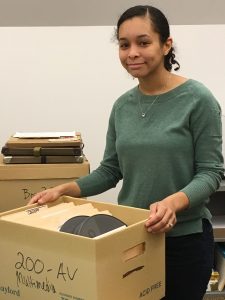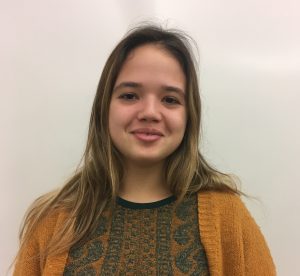Finding local and creative angles to cover climate change
We recently added to the ACDC collection an article in Nieman Reports about journalists struggling to cover climate change. Author Michael Blanding described it as a complex and abstract topic that often lacks a news hook and defies most journalistic conventions. The article explains how some news outlets are bringing innovation, urgency, and new audiences to stories about climate change.
“While climate change is perhaps the global issue, it is an intensely local one, with effects from climate change felt on agriculture and business from coastal cities to rural farms.” He suggested looking for stories close to home.
You can read the article here.
“Half of the world is now online” So…
That news last month from a United Nations agency, the International Telecommunication Union, stirs hopes and challenges for rural residents and interests.
The world’s internet population is estimated to have reached 51.2 percent or 3.9 billion people. Also, almost half of all households in the world have access to a computer, such as a desktop, laptop, or tablet.
“Despite the progress, more needs to be done to help the rest of the world’s population go online,” said ITU Secretary General Houlin Zhao. “Far too many people around the world are still waiting to reap the benefits of the digital economy.” Many resources in ACDC confirm that view. They show long experience with new information technologies from which rural residents receive a limited and delayed share of benefits those technologies offer.
You can read a report of this news here.
How some early U.S. rural families gained IT – with barbed wire
Recently we added to ACDC an Atlas Obscura article entitled, “Barbed wire telephone lines brought isolated homesteaders together.” Focusing on the American frontier of the 1800s, author Natasha Frost described how creative homesteaders teamed up two new inventions – the telephone and barbed wire used to fence their properties.
“Together, in an amazing display of rural ingenuity, they connected isolated households to their rural neighbors and the rest of the world. Left to telephone companies and their bottom lines, farm people would not have had telecommunications at all. Building lines was expensive, and hardly worth the effort in sparsely populated areas.”
You can read this revealing piece of history here. Information challenges and the ingenuity of rural people continue, globally.
20 ideas for enlivening local community food systems
A team of University of Kentucky researchers recently examined them in developing a Local Food Vitality Index. Their report in the Journal of Food Distribution Research spanned three categories:
- Market channels (8), ranging from cooperative grocery stores and farmers’ markets to school programs, food trucks and ethnic markets
- Community activities (6), ranging from food festivals and food education to community gardens and on-farm events
- Local food promotion activities (6), ranging from local food labels and brewery promotion to competitive pricing, government support, and private investment
You can read “Local food vitality index: measuring consumer attitudes toward food system attributes” here.
Replacing the term “GMO”
We are preserving in ACDC a news reminder to farmers about the U.S. Department of Agriculture decision to replace the term “GMO” with “Bioengineered Food (BE)” a year from now: January 2020. “This ensures clear information and labeling consistency for consumers about the ingredients in their food,” said Agriculture Secretary Sonny Perdue.
We are adding the term to our ACDC citations. It now accompanies an evolution of terms such as “genetic engineering,” “biotechnology,” “genetic modification,” and “GMO.” We suggest you use all of them when you search the ACDC collection online for such information. The ACDC collection now contains nearly 2,200 documents (1957-2018) involving communications about biotechnology related to food and agriculture.
You can read the recent farm media report here.
Thanks to Hailley Shaw

Our thanks and best wishes go with Hailley Shaw, ACDC graduate assistant since last May. She has completed her master’s degree in library and information science here at the University of Illinois. Within ACDC, she has, for example, identified and gathered documents for the collection, managed the website, processed several contributed collections, responded to requests, and pitched in on other projects. And all in good spirit. Thinking back on her experience, Hailley observes:
“I have thoroughly enjoyed my experience at ACDC. I have learned so much about how intertwined agricultural communications is with other fields – from politics and education to ethics, business, sociology, etc. I hope to continue to grow my librarian career, focusing on archiving and designing library spaces. My time at the Center has been invaluable as it has provided me with experiences furthering my interest in how informational content pairs with physical objects.”
Communicator events approaching
February 11, 2019
Deadline for full paper proposals for the 2019 Association for Communication Excellence in Agriculture, Natural Resources, and Life and Human Sciences (ACE) annual meeting, June 22-27, in San Antonio, Texas USA.
Information: Prof. Jessica Holt jaholt@uga.edu
March 4, 2019
Deadline for poster abstracts for the 2019 Association for Communication Excellence in Agriculture, Natural Resources, and Life and Human Sciences (ACE) annual meeting, June 22-27, in San Antonio, Texas USA.
Information: Prof. Jessica Holt jaholt@uga.edu
April 1-4, 2019
“Linking, innovating, motivation, and engaging for resilient agricultural systems”
Conference of the Association for International Agricultural and Extension Educators (AIAEE) in Port-of-Spain, Trinidad & Tobago.
Information: https://aiaee2019trinidad.wordpress.com
April 10-12, 2019
“Soar onward and upward.” 2019 Agri-Marketing Conference sponsored by the National Agri-Marketing Association (NAMA) in Kansas City, Missouri USA.
Information: https://nama.org/amc/2019-amc-home
June 2-5, 2019
“Southern accent on fresh ideas.” Annual institute of the Cooperative Communicators Association (CCA) in Savannah, Georgia USA.
Information: https://www.communicators.coop
Why can’t we communicate with plants?
In closing this issue of ACDC News we ponder a thought from Jeanne Carstensen, writing in the Modern Farmer magazine.
“…maybe the reason plants don’t respond to our desperate attempts to communicate is simple: they don’t need humans. ‘They can survive without us,’ [biologist Daniel] Chamovitz says, ‘But we wouldn’t survive a minute without them.’”
Best wishes and good searching
Please pass along your reactions, suggestions, and ideas. Feel free to invite our help as you search for information. Don’t forget to follow us on Twitter @ACDCUIUC. And please suggest (or send) agricultural communications documents we might add to this unique and valuable international collection. We welcome them in hard copy (sent to Ag Comm Documentation Center, Room 510, 1101 S. Goodwin Avenue, Urbana, IL 61801) or in electronic format sent to docctr@library.illinois.edu
Click Here for a printer-friendly PDF of this newsletter.



